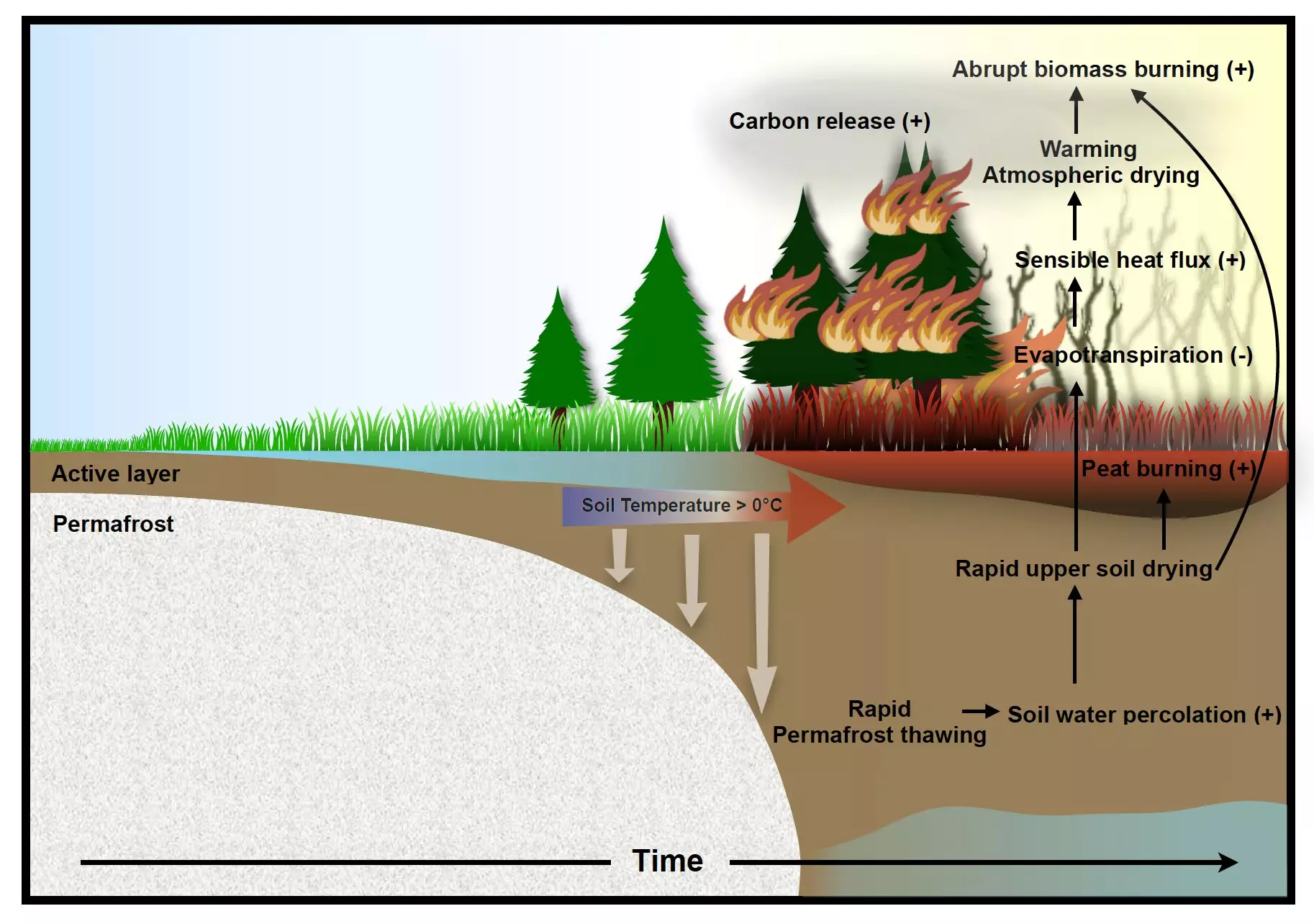As global temperatures continue to rise due to anthropogenic activities, the cascading effects on natural ecosystems have begun to manifest with alarming urgency. The latest research published in *Nature Communications* highlights a critical intersection of climate science, demonstrating how the thawing of permafrost is likely to exacerbate wildfire activity in the Subarctic and Arctic regions of Canada and Siberia. This study, led by an international consortium of climate experts, provides a sobering glimpse into the future by coupling complex climate models with empirical observations to better understand the feedback mechanisms at play.
Permafrost, the permanently frozen layer beneath the Earth’s surface, plays a crucial role in governing soil moisture content. Moist soil is pivotal in suppressing the likelihood of wildfires; it acts as a natural buffer against the extension of flames. However, as climate models predict rising temperatures, especially in the high northern latitudes, this frosty barrier is expected to thaw extensively, affecting not only soil moisture but also the broader ecological fabric of the region.
This research emphasizes an area frequently overlooked—the intricate relationship between permafrost thawing and its impact on wildfire dynamics. New findings indicate that neglecting this interaction in previous climate models has resulted in a significant underestimation of future wildfire occurrences. The comprehensive Community Earth System Model, utilized in this study, integrates detailed representations of permafrost characteristics along with anticipated soil water scenarios, aiming to fill these gaps in understanding.
Using an ensemble of 50 simulations spanning from 1850 to 2100 under a specified greenhouse gas emission trajectory, the researchers uncovered profound implications for wildfire activity. By mid-century, the analysis indicates an alarming trend: areas currently facing minimal wildfire events will experience a rapid transition to frequent and intense fires. Dr. In-Won Kim, the lead author of the study, points out an essential factor—excess soil water can diminish drastically as it drains, leading to both surface warming and drying of the atmosphere—conditions conducive to wildfires.
This abrupt shift from “no fires” to “intensive fires” within just a few years underscores the urgency with which we must address climate change and its effects. Not only do wildfires pose direct threats to biodiversity and human settlements, but they also have far-reaching consequences for global carbon cycles. As organic matter burns, large quantities of carbon dioxide and particulates are released into the atmosphere, aggravating climate change effects through a vicious feedback loop.
Another factor complicating this scenario is the potential for increased vegetation biomass in high latitude regions due to elevated carbon dioxide levels—a phenomenon often referred to as the CO2 fertilization effect. While more vegetation may seem beneficial in some contexts, it inadvertently raises the fire fuel load, increasing the intensity and frequency of potential wildfires. Consequently, regions that could provide ecosystem services and biodiversity are at risk of undergoing profound transformations, driven by climatic changes.
To navigate these complex dynamics effectively, researchers like Associate Professor Hanna Lee suggest that future models require enhanced precision in assessing small-scale hydrological processes. By incorporating extensive observational datasets, scientists can create more reliable projections of how permafrost landscapes will degrade over time.
Prof. Axel Timmermann, a co-author of the study, raises another critical point regarding the current state of climate modeling. Existing models have yet to fully integrate the consequences of fire emissions on atmospheric conditions, leaving a substantial gap in understanding how these variables interplay. The intricate feedback loops involving fire emissions play a significant role in the broader climate narrative, as emissions not only contribute to warming but also adversely affect permafrost stability.
Therefore, immediate action is needed not only to improve our models but also to address the urgent issue of climate change. By advancing our understanding through integrated climate models, we enhance our ability to develop effective adaptation and mitigation strategies for ecosystems increasingly threatened by wildfires and thawing permafrost.
As we delve deeper into this multifaceted issue, the prioritization of scientific rigor and interdisciplinary collaboration becomes crucial. The findings from this study serve as a clarion call, urging policymakers, scientists, and communities to act decisively in addressing the dire challenges presented by climate change. The interplay between permafrost thawing and wildfires is not merely a northern issue; it is an urgent global threat that demands our immediate and sustained attention.


Leave a Reply